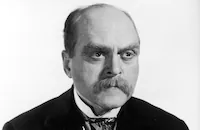Central Airport

Brief Synopsis
Cast & Crew
William A. Wellman
Richard Barthelmess
Sally Eilers
Tom Brown
Grant Mitchell
James Murray
Film Details
Technical Specs

Synopsis
When Jim Blaine's plane goes down in a storm, Jim is held responsible for ignoring storm warnings. Because he can never fly passenger planes again, he returns home and takes a job in a bank. Jim's brother Neil, who idolizes him, has learned to fly and is leaving for Los Angeles to take a job as a test pilot. One day, Jim meets Jill Collins after she parachutes from a plane and lands nearby. When her brother, a pilot, dies in a crash, Jim takes his place flying in an air show. Jim and Jill fall in love, but Jim does not want to marry her because he believes that flyers should never get married. Intending to surprise his brother, Neil waits in the hotel lobby where he spots Jill and immediately falls in love with her himself. After Jim is injured in a freak accident, Neil takes over his job flying with Jill. When Jim recovers, he flies back to the air show, intending to ask Jill to marry him. He walks in on Neil and Jill in bed together and punches Neil before Jill can explain that they were married earlier that morning. Soon Neil gets a job as a commercial pilot and Jim suppresses his wounded feelings by flying in dangerous situations. After several years, Jim arrives in Havana, where Neil and Jill have recently been transferred. Jim and Jill meet while Neil is on a flight and discover that they are still in love. Then they hear that Neil's plane is down in the Gulf of Mexico. Because no one will look for him in the storm, Jim takes off to search for him. He finds the downed plane and manages to save all the passengers, but a heavy fog comes in and he cannot see well enough to land. All the cars in the city then line up in an old airfield, and with the help of their headlights and horns, Jim lands safely. Realizing how much Neil loves Jill, Jim leaves town again, but this time on better terms with his brother.

Director

William A. Wellman
Cast

Richard Barthelmess

Sally Eilers

Tom Brown

Grant Mitchell
James Murray

Claire Mcdowell
Willard Robertson
Arthur Vinton
John Vosper

Glenda Farrell
Lucille Ward
Russ Powell

Bradley Page
Harry Semels

Walter Miller
Betty Jane Gordon
Theodore Newton

Charles Lane

John Wayne
Dick Elliott
George Regas

Irving Bacon

James Ellison
James Bush
Sam Mcdaniel

Louise Beavers
Jed Prouty
Lester Dorr
Fred "snowflake" Toones
Charles Williams
Phil Tead

J. Carroll Naish
Harry C. Bradley

Toby Wing
Milt Kibbee
Crew

Film Details
Technical Specs

Articles
Central Airport
Like several of Wellman's films, Central Airport presents a romantic triangle with two men vying for the same woman but in this case the two men are brothers. Jim (Richard Barthelmess) is a professional pilot who is banned from the industry after ignoring storm warnings that result in a commercial airline crash. After a brief stint as a banker, Jim meets Jill (Sally Eilers), a dazzling female parachutist who is part of a high-flying carnival act, and becomes her partner and lover. Unable to commit to marriage because of his risky profession, Jim unintentionally drives Jill into the arms of his competitive younger brother Neil (Tom Brown) who has no qualms about getting hitched. Jim, disgusted and disillusioned by the turn of events, begins a globe-trotting existence, accepting dangerous flying missions in remote places. By chance he encounters Jill in Havana several years later where Neil has recently been transferred. In an ironic twist Jim is soon called on to rescue Neil whose passenger plane has gone down in the Gulf of Mexico during a storm. Will he reach his brother in time to save him and the surviving passengers? Will Jim and Jill finally be reunited at the fade-out?
Despite the predictable nature of the story and a noble, self-sacrificing moral code which predetermines the climax and reflects a long-vanished age of chivalry, Central Airport is distinguished by its first-rate aerial photography and stunts, model set miniatures of landscapes and airfields, and some frisky Pre-Code behavior such as Jim and Jill pretending to keep separate hotel rooms as they travel around the carnival circuit or the scene where Jim surprises Neil and Jill in bed together.
If there is a major flaw in the film it is the casting of Tom Brown in the role of Neil. Not only does he look too young for the part but his pencil thin mustache only accents his juvenile appearance which is made worse by his overly earnest performance and the obvious lack of sexual chemistry between him and Sally Eilers. Richard Barthelmess, however, is compelling as the tragic hero, forging ahead with a grim determination while leaving parts of himself behind, wherever he goes: "an eye in Nicaragua, a heel in China, a couple of ribs in Chile. It's been a habit wherever I go. I leave 'em something to remember me by." It is only fitting that Wellman would chose to represent Jim's painful separation from the two people he loves most in physical terms - and in bodily injuries from aviation accidents.
Something to look for in the final climax is the brief appearance of John Wayne, still an unknown B-movie actor and extra at this point in his career. As Neil's co-pilot of the downed plane, he can be spotted trying to help the terrified survivors as the rough weather dislodges some of them and he eventually drowns trying to save a castaway.
One other bit of trivia relates to the opening disaster that ruins Jim's career as a commercial pilot. Apparently the crash scene was omitted by the aviation board of the Los Angeles Chamber of Commerce because they deemed it harmful to the travel industry. Of course, that didn't stop Wellman from filming - and keeping - the sequence where Jill's brother crash-lands and is killed while rehearsing a stunt for his air show.
Producer: Hal B. Wallis
Director: William A. Wellman
Screenplay: Jack Moffitt, Rian James, James Seymour
Cinematography: Sidney Hickox
Film Editing: James Morley
Art Direction: Jack Okey
Music: Howard Jackson, Bernhard Kaun
Cast: Richard Barthelmess (James Blaine), Sally Eilers (Jill Collins), Tom Brown (Neil Blaine), Grant Mitchell (Mr. Blaine), James Murray (Eddie Hughes), Claire McDowell (Mrs. Blaine).
BW-72m.
by Jeff Stafford
SOURCES: Hal Wallis: The Autobiography of Hal Wallis by Hal Wallis and Charles Higham
William A. Wellman by Frank T. Thompson
www.afi.com

Central Airport
Quotes
Trivia
Alfred E. Green temporarily replaced William A. Wellman as director when he caught the flu.
A note on file in the AMPAS library says that John Vosper replaced Charles Sellon, J. Carrol Naish replaced Harold Huber and 'Powell, Russ' replaced Robert W. Craig.
Notes
Jack Moffit's story was entitled "Hawk's Mate." The film's working title was Grand Central Airport. Al Green substituted for director William Wellman while he was out with the flu. A contemporary but unidentified note in the file on the film in the AMPAS Library states that actor John Vosper replaced Charles Sellon, J. Carroll Naish replaced Harold Huber and Russ Powell replaced Robert Craig. A news item in Film Daily notes that this was Milt Kibbee's film debut. A plane crash scene in the film was omitted after the aviation board of the Los Angeles Chamber of Commerce deemed it harmful to the travel industry. The film was shot over thirty days for a total cost of $365,000 according to a work sheet in the film's production file at the AMPAS Library.















